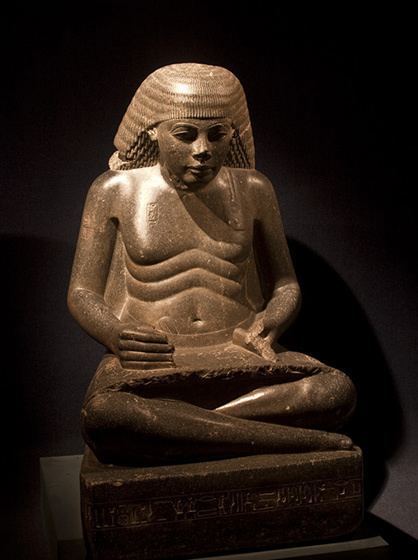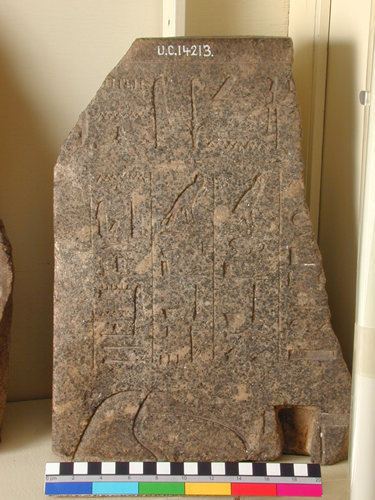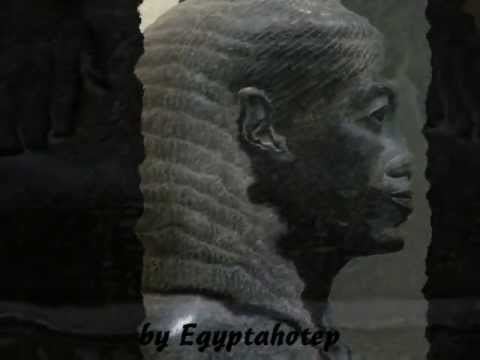Name Amenhotep, of | Role Architect | |
Structures Colossi of Memnon, Mortuary Temple of Amenhotep III | ||
EGYPT 521 - AMENHOTEP (Son of HAPU) - (by Egyptahotep)
Amenhotep, son of Hapu, was an architect, a priest, a scribe, and a public official, who held a number of offices under Amenhotep III.

He is said to have been born at the end of Thutmose III's reign, in the town of Athribis (modern Banha in the north of Cairo). His father was Hapu, and his mother Itu. He was a priest and a Scribe of Recruits (organizing the labour and supplying the manpower for the Pharaoh's projects, both civilian and military). He was also an architect and supervised several building projects, among them Amenhotep III's mortuary temple at western Thebes, of which only two statues remain nowadays, known as the Colossi of Memnon. He may also have been the architect of the Temple of Soleb in Nubia. According to some reliefs in the tomb of Ramose, he may have died in the 31st year of Amenhotep III.
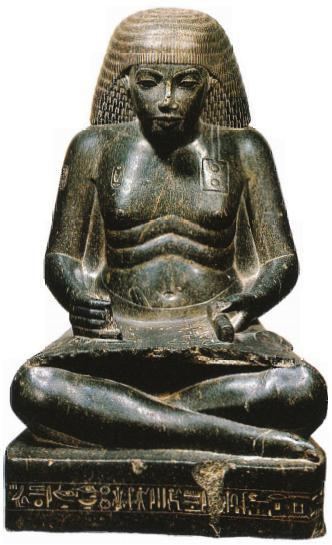
After his death, his reputation grew and he was revered for his teachings and as a philosopher. He was also revered as a healer and eventually worshipped as a god of healing, like his predecessor Imhotep. There are several surviving statues of him as a scribe, portraying him as a young man and as an older man. He was a deified human and thus was depicted only in human form. His cult was initially limited to the Thebes area, with a funerary temple constructed to him during his lifetime next to that of Amenhotep III. This was clearly an exceptional privilege, as it was the only private cult temple to be built among the royal monuments in the area. He continued to be worshipped for at least three centuries after his death. During the period of the Ptolemaic Kingdom his worship saw a resurgence which led to chapels being dedicated to him in the Temple of Hathor at Deir el-Medina and the Mortuary Temple of Hatshepsut at Deir el-Bahari. Statues were erected to him in the Temple of Amun at Karnak and he was treated as an intermediary with the god Amun.
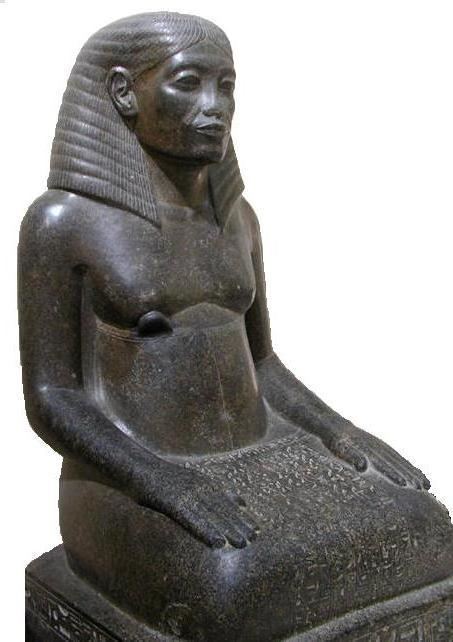
Manetho gives a legendary account of how Amenhotep advised a king named Amenophis, who was "desirous to become a spectator of the gods, as had Orus, one of his predecessors in that kingdom, desired the same before him". This Amenophis is commonly identified with Akhenaton, while Orus fits with the latter's father, Amenhotep III. Manetho relates that the wise man counseled that the king should "clear the whole country of the lepers and of the other impure people" and that the King then sent 80,000 lepers to the quarries. After this the wise man foresaw that the lepers would ally themselves with people coming to their help and subdue Egypt. He put the prophecy into letter to the King and then killed himself. Manetho associates this event with the Exodus of the Israelites from Egypt but Josephus strongly rejects that interpretation.
